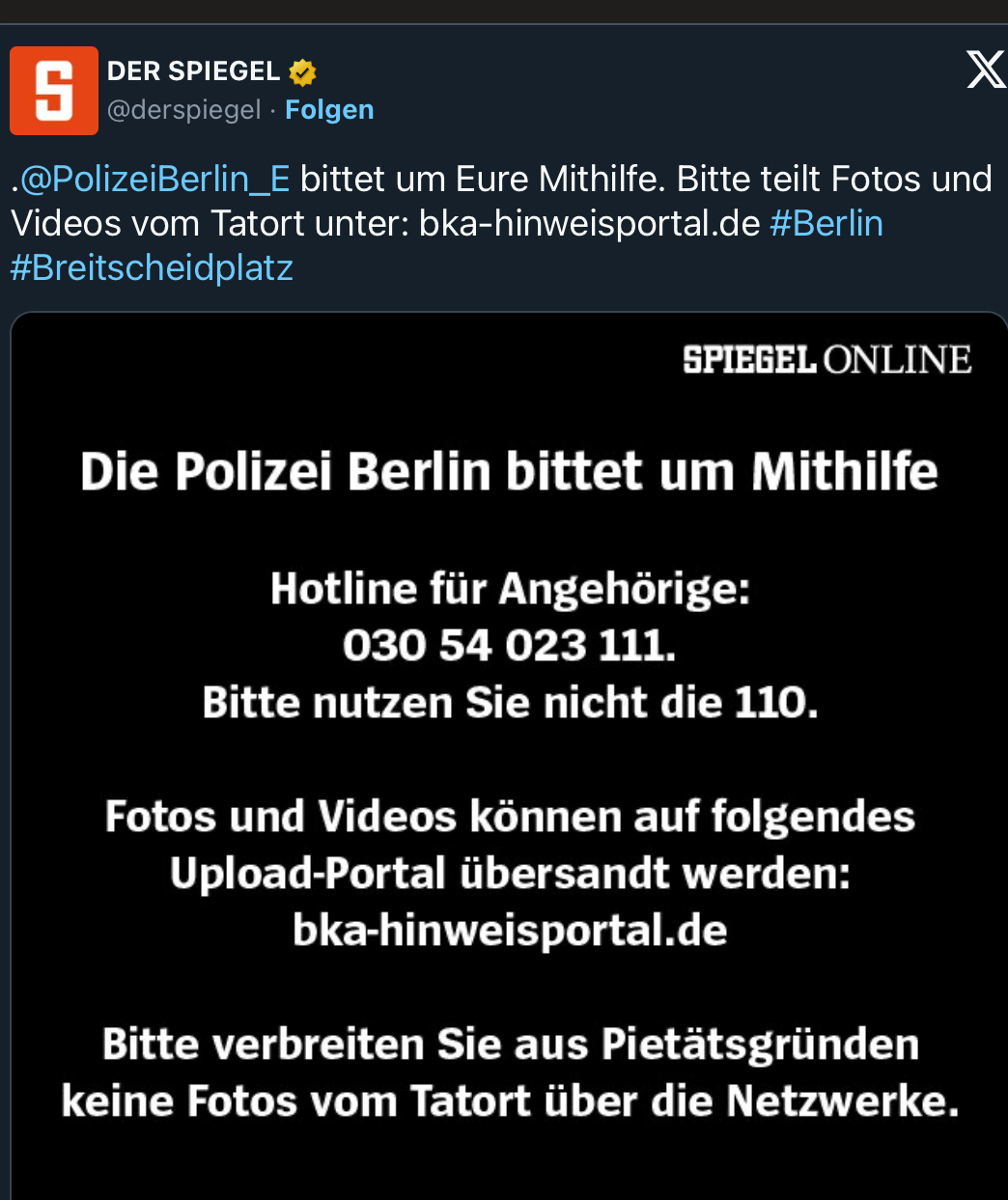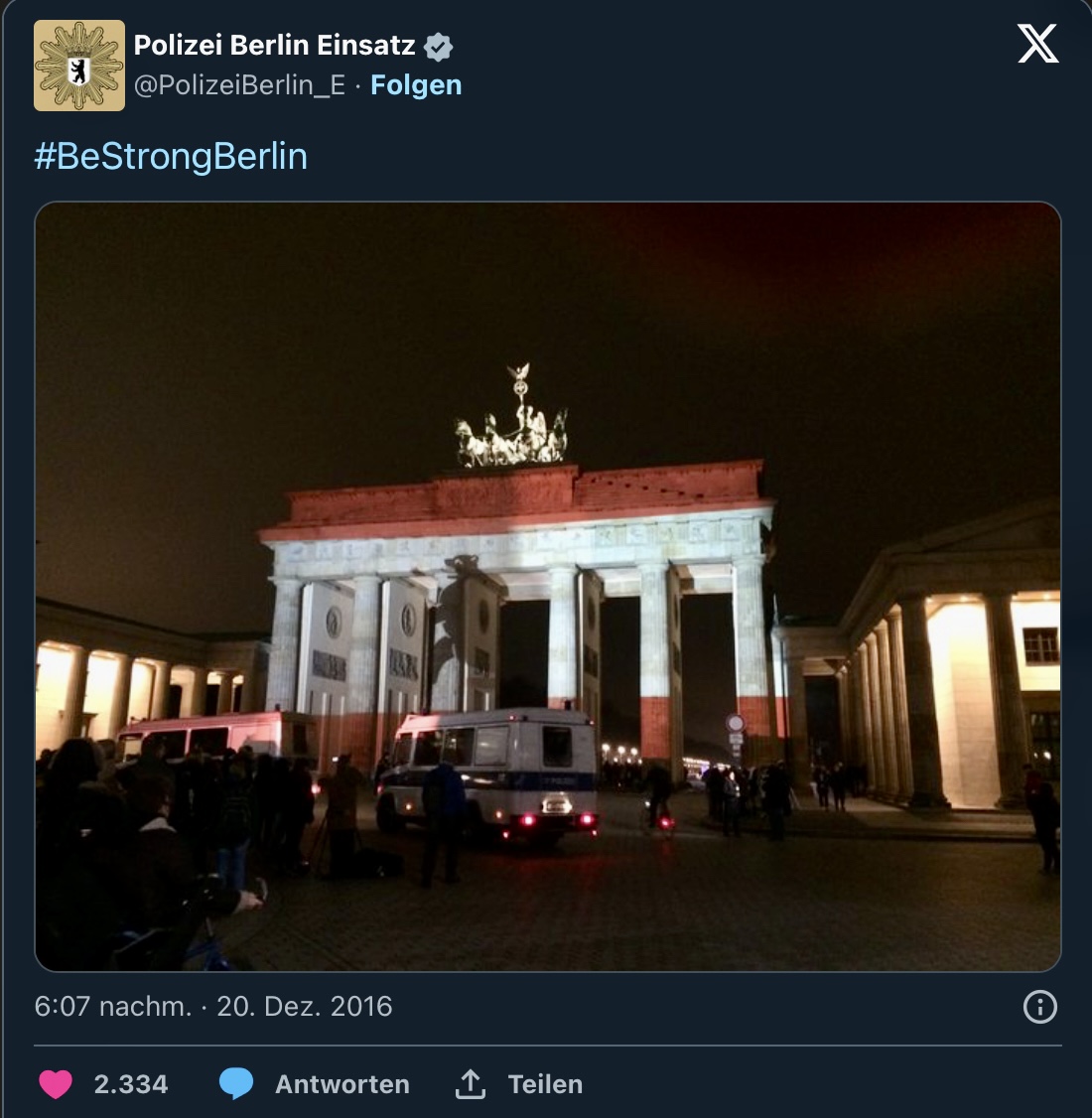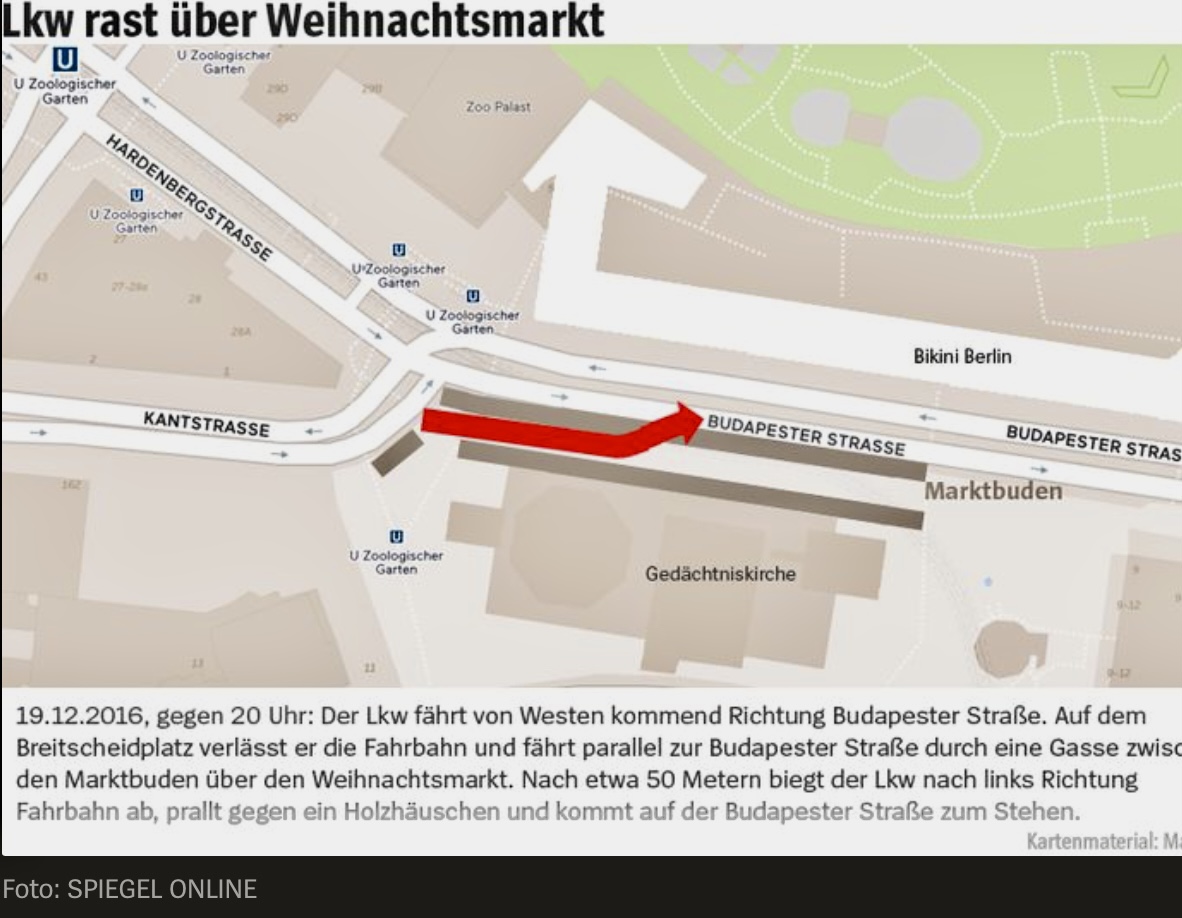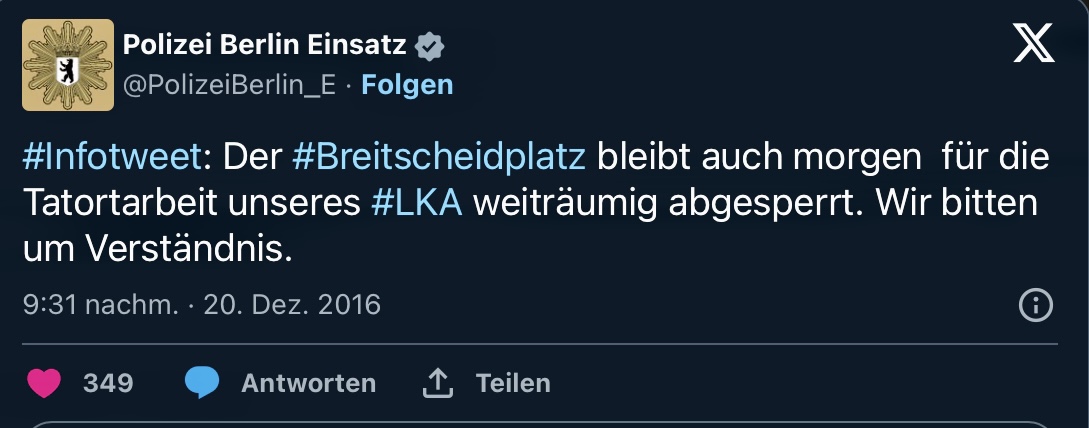Last edited: 29 November 2023
Hazard:
TerrorYear:
2016Location:
Berlin, GermanyScale:
CountryInvolved Organisations:
Police BerlinPublishing Organisation
Deutsche Hochschule der Polizei (DHPol)
Category
Real-world
Theme
Social Media
Thematic
- Making Information Accessible
- Mobilising Citizens
Disaster Management Phase
After, During
Description
On 19 December 2016, a truck was deliberately driven into the Christmas market next to the Kaiser Wilhelm Memorial Church at Breitscheidplatz in Berlin, leaving 12 people dead and 56 others injured. One of the victims was the truck's original driver, Łukasz Urban, who was found shot dead in the passenger seat. The truck was eventually stopped by its automatic brakes. The perpetrator was a 23-year-old (eventually rejected) asylum seeker from Tunisia. He was able to flee the scene. Four days after the attack, he was killed in a shootout with police near Milan in Italy. An initial suspect was arrested and later released due to lack of evidence.
During and in the aftermath of the incident German authorities faced a very chaotic situation with excessive insecurity and high risk for the public because back then the modus operandi that uses vehicles as weapons was a relatively new phenomenon for European authorities and the perpetrator was still on the run.What worked well and could be recommended to others?
Yet, the Berlin authorities managed to take several communication measures that successfully helped to calm the public down and prevent further panic or the spread of rumours. A great deal of their strategy therefore built on resources they had established beforehand: they could rely on pre-formulated messages for such an incident and a concept for an alert system, they had already established a 4-eye-principle to secure message accuracy and wording as well as a cross-district backup plan to get other communication officers involved to be able to keep the public up to 24/7 even during operations with an unknown time frame (that could potentially last for several days as in this incident). This way, they could circumvent the usual command structure across different hierarchy levels, keep feedback-loops short and thus take action within minutes or sometimes even seconds. More precisely,
- they sent the first tweet right out of a police car,
- they chose to share actual information on what they knew and what they were doing (instead of empty messages such as e.g., ‘We have everything under control, just stay at home’ which would have likely only stirred rumour and potentially panic)
- they were the first to actively set the #s for the incident on social media and thus could steer the public discourse in a way that it remained relatively calm and neutral (#Breitscheidplatz instead of #terror / #amok)What limitations were identified?
Even though the Berlin police handled the crisis communication during the attack extremely well, they neglected the importance of the recovery phase and the political dimensions of such an event and thus still had to face harsh criticism in the aftermath of the events which partly also addressed their social media work: As it turned out, the assassin had been known to the German security authorities beforehand and was classified as an Islamist threat. The Islamic State of Iraq and the Levant gave him instructions and ISIL released a video of him pledging allegiance to the terror group's then-leader, Abu Bakr al-Baghdadi.
What followed was a long discussion and investigation trying to clarify who was responsible for the fact that the perpetrator had not been under surveillance (and if social media monitoring in terms of predictive policing would have prevented the attack) and the authorities could not manage to gain interpretational sovereignty over this discourse.



